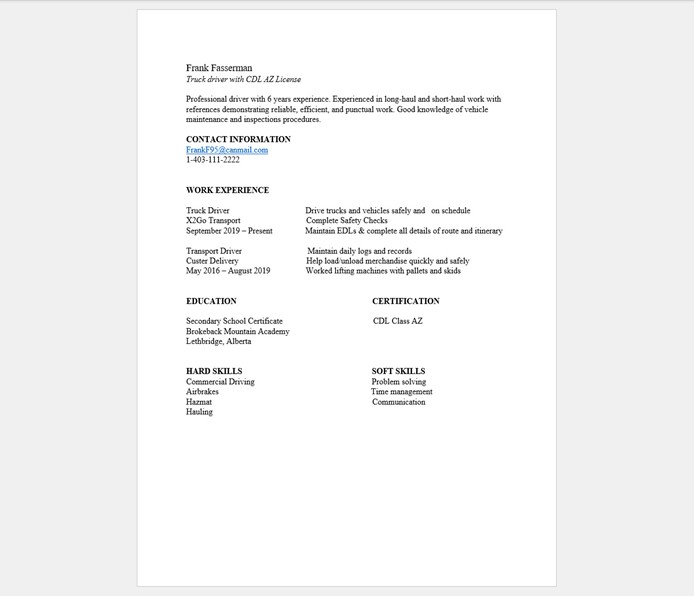Truck driving schools in Canada

The choice is between community colleges with trucking courses and private schools that may sometimes work with trucking companies (as do many local college programs). Some private schools don’t seem to have the best reputation, so opinion seems to slightly favor colleges. Most programs are around 3 months and require over 100 hours of training and may include additional training for airbrakes, for example, or include the MELT program (Mandatory Entry Level Training). With this in mind, let’s survey some of the offerings out there.
How to find a good truck driving school?
You’ll easily find them searching online. Here’s some suggestions to prime your pump:
- In the Vancouver area and elsewhere in BC try:
- Gold Star Professional Driving School in Burnaby BC
- Burnaby Professional Driving School also, oddly enough, in Burnaby
- Road Titans Driving School in Surrey BC
- College of the Rockies in Golden BC
- Thompson Rivers University – Truck Driver Training in Kamloops BC
- In the Calgary area and elsewhere in Alberta, try:
- T. Safety Truck Driving School in Calgary, Alberta
- CCA Truck Driver Training in Calgary
- Capilano Truck Driver Training Institute in Edmonton, Alberta
- Wheels On school in Red Deer, Alberta
- In the GTA and the rest of Ontario try:
- Humber College Transportation Training Centre – in Mississauga Ontario (just west of Toronto)
- Durham College – Truck Driver/Technical Training – in Whitby/Oshawa Ontario (just east of Toronto)
- Canadian Truck Training Centre – Mississauga Ontario
- Confederation College AZ Truck Driver MELT (Mandatory Entry Level Training) in Thunder Bay Ontario
What are the expected costs?
Most truck driving training programs and courses will cost you anywhere from $5,000 to up to $15,000. Yes, that’s expensive for a course that might last a month or two, but it’s mandatory training. However, you can look for funding, especially from an employer who is willing to offer you a truck driving job and will pay for at least a part of your tuition. Here are some funding options available in Canada:
- Canada-Ontario Job Grant (COJG): This provides financial support to employers who want to deliver short-term training for their existing and new employees. If you can get a transportation company in Ontario to offer you a job, this program helps the company pay the costs of your truck driving course.
- Second Career: this provides living expenses and helps with tuition for unemployed and laid-off workers in Ontario.
- Ontario Works: also helps with the cost of training programs for recipients of this program.
- Work BC – B.C. Employer Training Grant – this provides up to $10,000 per employee to the employer to cover up to 80% of the cost of training. This is done to help their employees upgrade their skills.
- Canada-Alberta Job Grant (CAJG): this is similar to COJG and involves the employer applying on behalf of current and future employees to obtain funding for their training costs. Funding is provided by the government through the Workforce Development Agreement. The government funds 2/3 of the cost and the employer funds 1/3 of the cost. If the employee is an unemployed Albertan, then the government can fund up to 100% of the cost.
Good school vs. Bad
The basic standard to judge truck driving schools by is MELT, Mandatory Entry Level Training. For the past several years many provinces have switched their training school standards for Class 1/A in Ontario commercial licenses to those mandated by MELT. For example:
- MELT in BC requires you to take 140 hours total time in the classroom and on the road.
- MELT in Ontario requires 103.5 hours total classroom and on-road training.
- MELT in Saskatchewan requires 121.5 hours total training, including in the classroom and on the road.
- MELT in Alberta requires 113 hours total training time.
- MELTS in Manitoba requires 121.5 hours total training time.
Make sure your school adheres to these standards, depending on the province it’s located in.
Ask yourself if the school is a member of a trade association? For example, Truck Training Schools of Ontario or TTSAO in Ontario.
Ask if the school takes care of the testing as well. Or do they just do the training and send you off elsewhere to be tested?
Some private schools associated with a few transport companies have had the reputation of churning out under-qualified drivers without the necessary training to handle road conditions in Canada. While they may offer you immediate work, make sure you don’t get stuck in a low-paying job with poor training that will put you at a disadvantage going forward. Community college truck training programs tend to take longer but they generally do a better job.
Resume template for truck drivers in Canada.
This first section, involving at most a paragraph or two, will be what makes someone decide to contact you or toss your resume aside. Get it right, for your own sake.
NAME
Truck driver with – type of license (with endorsements if possible)
One or two easy-to-read sentences that describe your skills and any references you have. Use positive adjectives like quick, reliable, punctual, or phrases like with good knowledge of vehicle maintenance and inspection.
CONTACT INFORMATION
Leave at least 2 ways for them to contact you: phone and email, throw in your WhatsApp if you want.
The next sections add details about your Work Experience, your Education, and any Certifications you have. List your latest job first and progress backwards to earlier jobs as you move down the page. The more experience you have the more you’ll know what to put down. Don’t over elaborate. List your responsibilities briefly, focusing on the functions you performed.
FAQ
Truck driving schools overseas (meeting Canadian standards)
As we mentioned elsewhere, you’ll need to take a training course and pass the examinations when you move to Canada. An overseas truck driving school might mean you have a little more experience and knowledge than someone starting from scratch. But remember, every country – and every province/territory in Canada – has slightly or sometimes significantly different regulatory requirements. Just assume you’ll have to study for and take practical training in Canada to become a truck driver.

